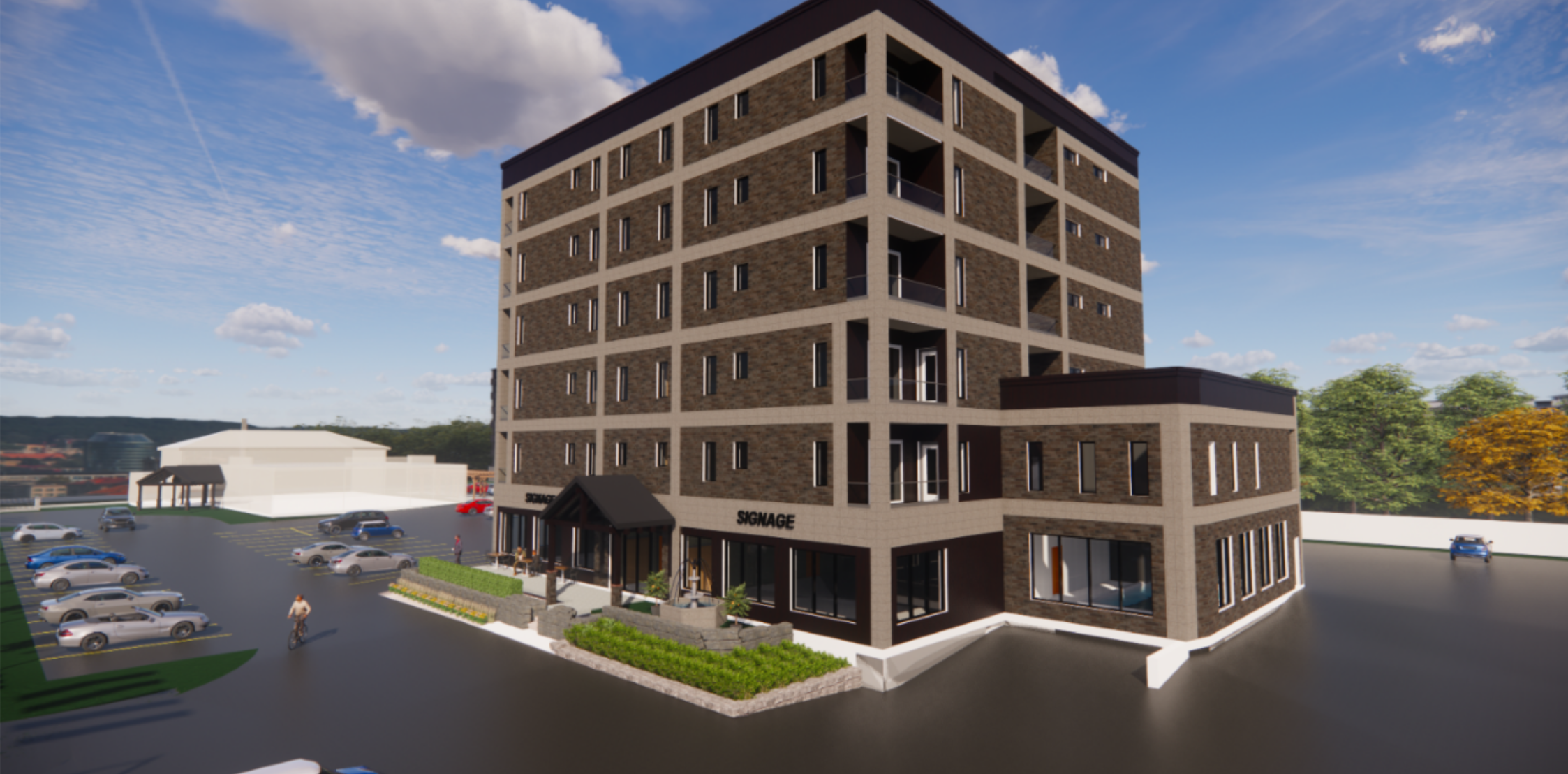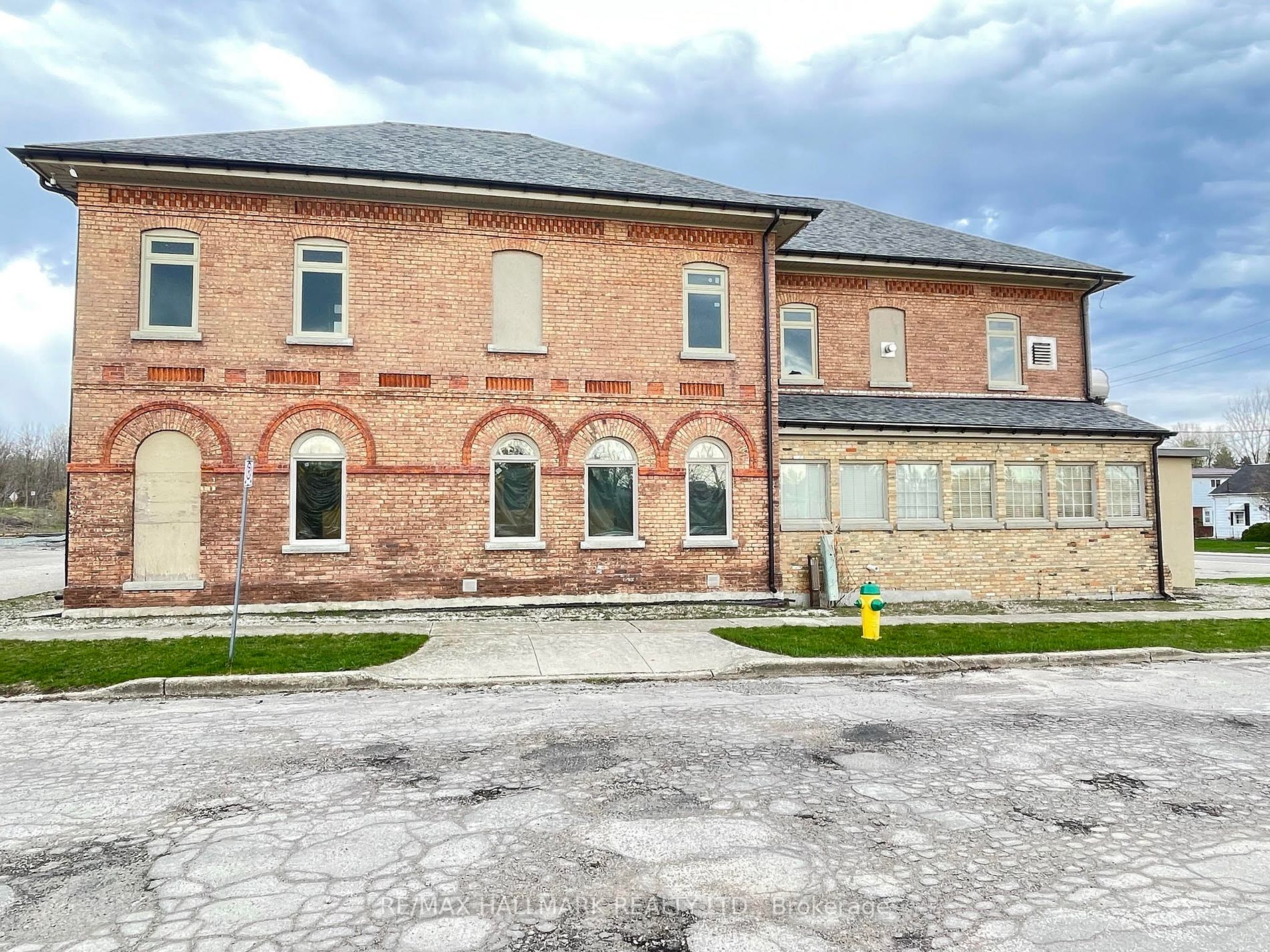Author The Lilly Commercial Team

Innovation With a View: Inside Microsoft’s New Canadian Headquarters
Microsoft opened the doors to its brand new Canadian headquarters today, a gargantuan 132,000-sq. ft facility located on floors 41-44 of the CIBC SQUARE building at 81 Bay Street.
As one would expect from the home base of one of the globe’s largest tech leaders, this sparking office compound is outfitted with the latest in cutting-edge workplace technology and amenities. In addition to connectivity and communications systems throughout to ease employees’ work flows, the space has been selected to host Microsoft’s first Data Innovation Centre of Excellence (DICE), a dedicated hub with a focus on innovative data, AI, and mixed-reality technology solutions.
The new headquarters will also be an innovation centre for technology startups, students, and community organizations from across the Greater Toronto Area and Canada.
“Microsoft has been deeply rooted in Canada for nearly 40 years and our commitment to help grow Canada’s innovation economy has never been stronger,” said Kevin Peesker, President of Microsoft Canada. “With the launch of our new headquarters, official opening of our Data Innovation Centre of Excellence and expansion of our regional presence, even more organizations of all sizes and sectors can leverage the power of cloud and data to accelerate their organization’s growth and drive new economic opportunity for Canada.”
Toronto Mayor John Tory was also on hand for the opening ceremony, acknowledging the investments the company has made over the past four years in Canada; the tech company accounts for more than 300,000 jobs, and contributes $37B to the nation’s GDP.
“The official opening of Microsoft’s new downtown headquarters is the next milestone in our city’s continued growth as one the leading technology hubs in North America. We’re so pleased to see this new Microsoft office opening. It will mean more innovation across Toronto’s world class network of universities, start-ups and incubators — all of which will help us continue our strong economic recovery from the pandemic,” Tory stated.
“Microsoft’s announcement of a brand new Canadian headquarters is another example of how the technology sector is fueling economic growth across the country. As the demand for digitization and new technology continues to grow across all industries, major companies like Microsoft continue to choose Canada for the ingenuity of our talent and the ambition of our innovation agenda,” stated the Honourable François-Philippe Champagne, Minister of Innovation, Science and Industry.
A Sleek, Connected Space
As has been the recent trend in office space design, each floor features a variety of open-concept and hotdesking stations, punctuated by focus meeting rooms — all outfitted with the latest tech to enable communication and connectivity.

Employees can take a well-deserved mental health break in a number of private meditation and wellness rooms, or find inspiration in the Growth Mindset Library, a “quiet nook” located on the 44th floor that can be used for break time, or informal gatherings. Those seeking deep focus spaces can find it in a number of “zone rooms”, outfitted for individual, head-down work, or collaborate with team members in dedicated conversation and incubation spaces. The space is also outfitted to promote social connection, with “kitchenette”-style hubs peppered throughout.
We have a feeling the most popular spot, though, will be the Cloud Bar on the 44th floor, where workers can grab a complimentary cup of joe, and take in the sweeping views of downtown Toronto.
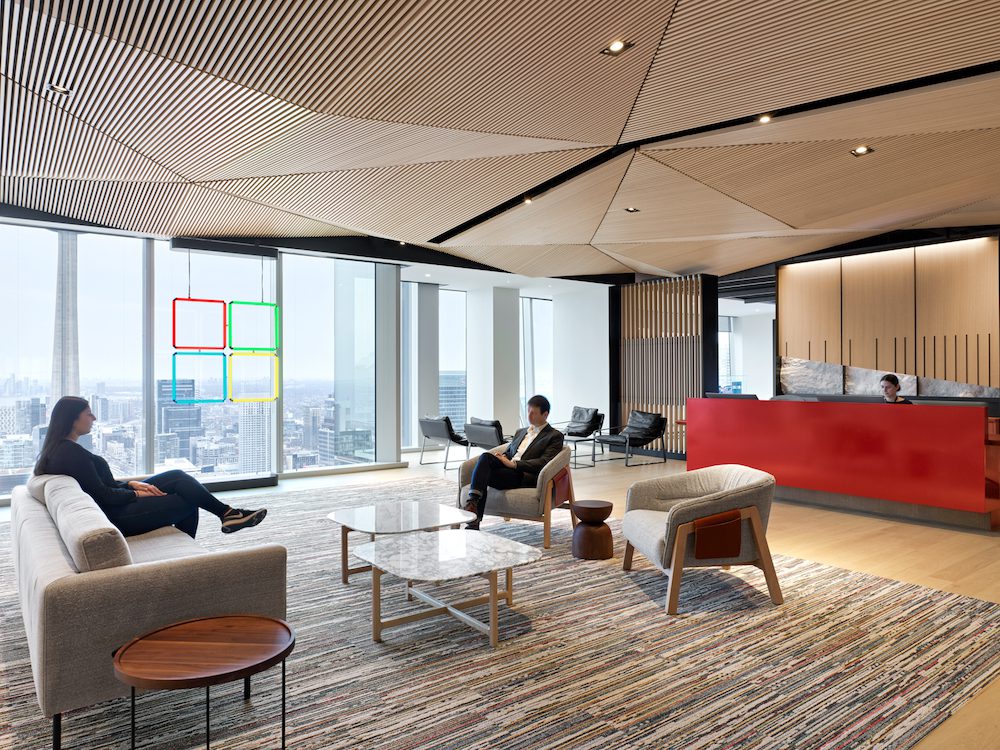
A Clearly Canadian Aesthetic
You could also be forgiven for mistaking this office space for an art gallery, with a notable design aesthetic featured throughout featuring mixed media, acrylic, sculpture, and murals. The art shares the theme of Canadian geography, and includes works from renowned artists such as Shaheer Zazai, Janna Watson, Rande Cook, and Kristiina Lahde.
The space has also been outfitted with over 3,000 sensors tracking water use, energy consumption, and carbon emissions, as part of Microsoft’s commitment to become carbon negative by 2030, and to remove more carbon than they’ve emitted since their founding by 2050. The company also announced it will pursue purchasing green power and carbon offsets for 100% of the project’s energy for a minimum of five years.

“A big reason we chose CIBC SQUARE for our HQ is proximity to transit, amazing talent and also because this building leads Toronto in the largest reduction of greenhouse gas emissions city-wide,” states the company in a fact sheet.
The new headquarters is the latest addition to Microsoft’s considerable Canadian footprint, which also includes a research and development lab in Montreal, a Government Innovation Centre in Ottawa, three gaming studios, a development centre in Vancouver, and two data centre regions in Toronto and Quebec City
Source Storeys. Click here to read a full story
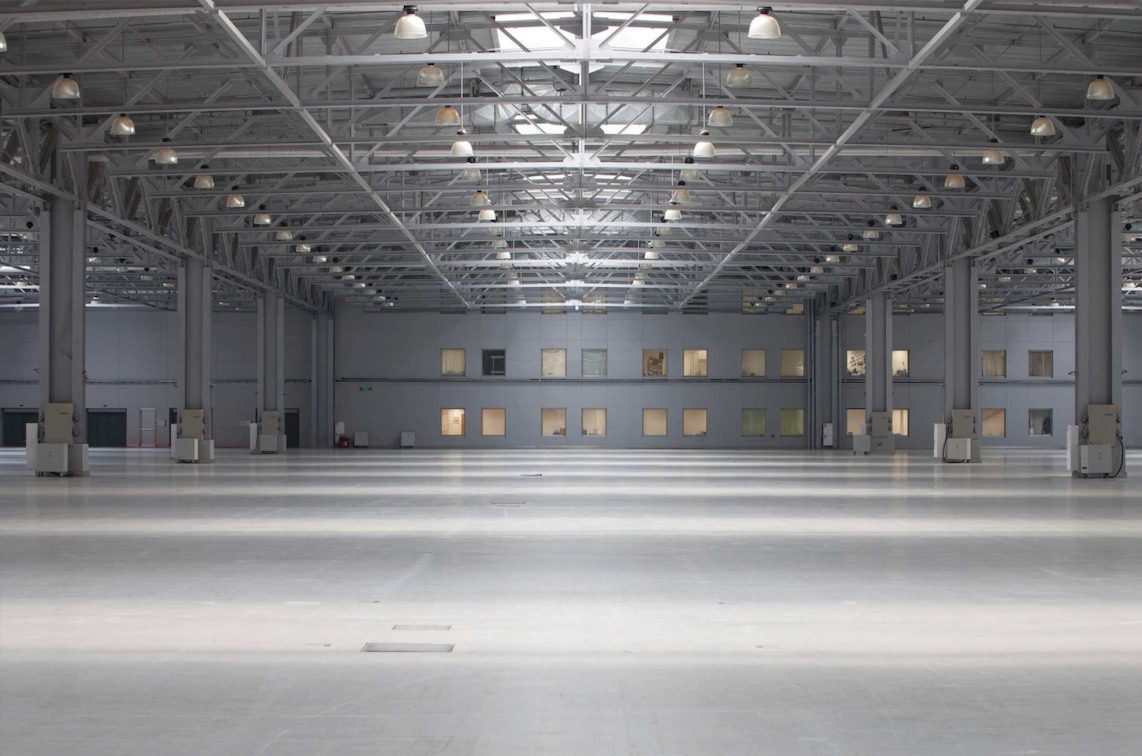
Vendor Terminates Purchase Agreement, Must Pay $11M In Lost Profits
When a seller refuses to complete a land purchase transaction, the consequences can be serious, especially if the buyer intends on developing the property.
In my previous column on WED Investments Limited v. Showcase Woodycrest Inc., the implications of this situation were explained – namely, a land purchase transaction fell through and the seller was held to be liable. In the result, the court awarded $3.2 million in damages to the buyer, representing the increase in value of the undeveloped land, as calculated between the time the purchase agreement was executed and the closing date.
In a more recent decision, however, a seller in similar circumstances was ordered to pay a buyer over $11 million in damages, representing the amount of profit the buyer may have reaped had it been able to purchase and develop the lands.
In The Rousseau Group v. 2528061 Ontario Inc. two parties entered into an agreement for a property sale in January 2017. The property was 45 acres with natural heritage features and was situated in a developing community that was expanding at the time.
The agreement, plans for the land
The buyer intended to undergo a large residential development on the land and the agreement specifically stated the land was being purchased for development.
The purchase price was $10.5 million and the value of the land was based on its development potential. The purchase price was therefore determined on the “net developable acreage” of the land, which was estimated to be 30 acres when the agreement was signed.
A $50,000 deposit was payable up-front and an additional $400,000 deposit was payable when the buyer waived all the conditions in the agreement. The agreement was also conditional on the buyer satisfying itself as to whether the development was economically feasible, and it was given wide latitude to conduct its diligence and inspect the property.
During its inspection, the buyer determined much less of the land was developable than originally estimated. Based on this finding, the buyer and seller agreed that the purchase price would be reduced by about 40 per cent to $6,615,000. However, the buyer also agreed to assume an existing mortgage the seller had on the property as part of the deal.
After the parties agreed to the amendment, the buyer waived all conditions in the purchase agreement and started operations to develop the lands upon the completion of the transaction.
Impasse leads to termination of purchase agreement
However, both sides reached an impasse regarding the terms of the amended deal.
The buyer asserted that, by agreeing to assume the mortgage, the seller waived the requirement to provide the additional $400,000 deposit, and therefore did not pay it. The seller, in turn, insisted the deposit was still payable and the buyer’s refusal to provide it constituted a breach of the agreement. As a result, in July 2017, the seller returned the initial deposit and refused to close the transaction in August 2017, as scheduled.
The buyer commenced an action against the seller right away and sought an order to compel the seller to honour the agreement and complete the transaction.
However, the matter did not go to trial until April 2021; and, by that time, the buyer abandoned its claim to purchase the land. Instead, damages were sought for all the losses it incurred related to the aborted transaction, including the loss of profits it would have realized if it were able to develop the property.
The court sided with the buyer and agreed the $400,000 deposit was not payable under the amended deal. As such, by refusing to complete the sale by the closing date, the seller breached the agreement and repudiated the transaction, which entitled the buyer to damages.
In awarding damages, the court departed from the reasoning in Wed Investments, where damages were awarded based on the difference in value of the land from the time the purchase agreement was executed and the closing date. Rather, in this case, the buyer succeeded on its claim for lost profits, had it been able to develop the property as intended.
In deciding to award damages on this basis, the court paid special attention to the fact that both the wording of the purchase agreement, and the buyer’s actions, showed it was always its intention to purchase the land for development, and the seller understood this.
Buyer proved damages
In proving its damages, the buyer provided expert evidence of the costs and profits of comparable developments. In this case, the buyer’s expert estimated the development costs would have been about $11 million and roughly $21-$23 million in revenue would have been generated. The projected profits were therefore in the range of $10-$12 million.
The seller challenged the buyer’s damages claim on the basis the projected profits were overstated and the buyer did not mitigate its damages by purchasing another property for a similar project. These arguments were not accepted for a number of reasons – most notably, there was no basis to challenge the expert evidence and the buyer established that no similar properties were available to purchase.
The court noted the fact the property was situated in an expanding community and therefore had strong development potential.
The court therefore accepted the damages claim and ordered the seller to pay $11.1 million, based on the projected lost profits the buyer would have collected from its intended development project.
This decision shows the far-reaching consequences a seller could face when terminating a property sale, especially if the buyer intends on developing the land. If a seller opts to end a deal, it should be certain the termination is lawful. If not, it could find itself on the hook for damages which far exceed the value of the land.
Source Real Estate News EXchange. Click here to read a full story
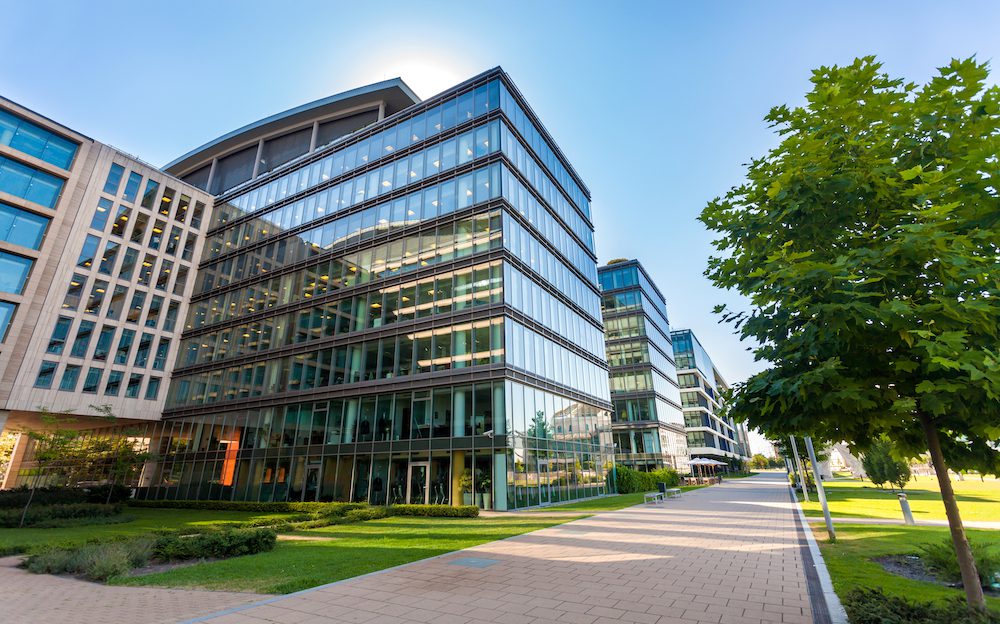
Why Many of Canada’s Commercial Buildings are Set for a Green Retrofit
When it comes to energy efficiency, most commercial buildings in Canada’s largest cities are behind the curve. In fact, many of these structures in Vancouver and Toronto predate modern building codes. However, according to Mike Singleton, Executive Director of Sustainable Buildings Canada, gradual — and economic — retrofits can make a world of difference, as well as augment a building’s value.
“In terms of retrofits, you have an opportunity to really do it right, and if you do, you can realize a 40-50% reduction in energy use, and that really is dramatic. If you can half your energy bills, that has obvious advantages, especially today with the price of fuel going up,” he says.
“The modern building code is updated every four or five years and energy performance requirements have improved to have better energy performance. The modern code is still 50 years old, however, requirements around energy performance a the beginning weren’t very much, but now they’re more and more stringent. The current version of the code is quite advanced compared to the ‘70s.”
Decades-old buildings can be modernized to ameliorate their energy consumption and, by extension, reduce utility outlays — which are usually borne by tenants — by fortifying their envelopes. Singleton says envelopes in such older buildings are leaky but can be tightened with better insulation, especially on the edifice’s exterior through superior glazing. Windows, in particular, are the most obvious way address air leakage and other thermal bridging issues, he adds, and exterior insulation is a good solution because it can mitigate energy loss and minimize problems caused by moisture.
Decades ago, windows were single-pane, but using today’s triple-pane will very noticeably improve energy efficiency — although it remains a little more complicated than that, Singleton says.
“You have to think about elevation, like which way the window faces, because there are heat-gain considerations; windows facing north have different requirements than windows facing the south or west, and would require different glazing,” he says, adding it primarily has to do with comfortable temperature than efficiency, although those gains aren’t as dramatic.
While those retrofits are pricier, involving mechanical upgrades and brand new HVAC systems, the benefits in the long run speak for themselves, Singleton added.
Getting Ahead of Rising Carbon Costs
In 2030, Canada’s carbon tax will increase from $40 per metric ton (MT) today to $170/MT, which Singleton believes should elucidate to commercial landlords the necessity of energy efficiency retrofits.
“That’s going to have a big impact on space heating costs, so the more you can do, the more advantageous it is in terms of potential equity, because if you can demonstrate your building is operating at half the cost as a similar building next door — it will also have a big impact,” Singleton said, adding, “the upward price pressure on fuel is going to start playing out and that may be where some of the impetus for change is going to come from.”
Energy efficiency upgrades through retrofits can, indeed, boost a commercial building’s value, according to Alain Rivère, Vice President of Office Leasing and Sales at CBRE’s High Technology Facilities Group — but other factors would influence whether or not retrofits are worth undertaking at all.
Inhered in a commercial building’s value, perhaps more than anything else, is its rental income potential, and although an energy efficient building — and the cosmetic improvements that come with it — can attract tenants, location and accessibility remain the two most important criteria. Rivère says that, before committing to retrofits, a mechanical engineer would need to conduct an assessment and help calculate the cost-benefit analysis because, in certain cases, razing the edifice and building a newer, improved, and more economically viable commercial structure, might make more sense.
Nevertheless, certain buildings are attractive to tenant companies that are willing to pay rents commensurate with quality, Rivère added, and a comfortable office with large windows through which natural light flows and lower operational costs reign supreme.
“Every building is different; for some buildings, it makes a ton of sense. [The landlord] should retrofit a building with good bones, as people say, and that has large windows that are old, mechanical systems that are super old and need to be replaced anyway, but that’s in a great location,” Rivère said.
“If you can build a building three times bigger and retrofitting is too expensive to bring it up to today’s standards, it might make more sense to build brand new than to retrofit. Location is always critical, as is the bones of building and what you’re working with. Some older buildings with inefficient floor plates and small windows, which would be replaced by small windows anyway, and other things you can’t change, make less sense to retrofit.”
Bringing Heritage Up to Date
In Vancouver, 1110 Hamilton and 1132 Hamilton are notable for their efficiency retrofits, as are the Sun Tower, at 128 West Pender, and 609 Granville.
Allied Properties is known for owning ‘vintage’ buildings with exposed brick and beams, and its portfolio is replete with such examples in Toronto and Vancouver.
Efficiency retrofits make a lot of sense in heritage buildings, Rivère added, and Vancouver has a lot of them.
“Older buildings that are attractive to retrofit are the heritage, brick and beam, character buildings, which are sought after, with their exposed beams and exposed ceilings,” he said. “Those are in strong demand, and older buildings like that, which are 60-plus years old, Vancouver has had great success in retrofitting.”
Those “character” buildings are commonplace in Vancouver’s Yaletown and Gastown neighbourhoods.
“It goes back to charm and character, which is what companies want, and they want it because these offices are interesting places to go to work that breed innovation, and they’re where people want to go,” he said. “The company’s office becomes a selling tool to attract talent.”
In addition to rising carbon tax rates, another reason companies will look into energy efficiency retrofits more in the coming years is the popular corporate neologism: environmental, social and Governance (ESG). Not only are companies increasingly conscious of their public image in today’s hyper-environmentally conscious world, so too are their employees, particularly younger ones, who will define the workforce for decades to come.
“[ESG] is more on decision makers’ radars when it comes to tenants looking for space, so a building that’s more environmentally friendly and energy efficient, and gives employees a better experience — with bigger windows and more natural light and better quality air, which is secondary to cost because it’s a better experience — that’s all part of ESG, and it’s on a lot of people’s radars these days,” Rivère said. “It’s another component of the reason for retrofitting.”
Source Real Estate News EXchange. Click here to read a full story
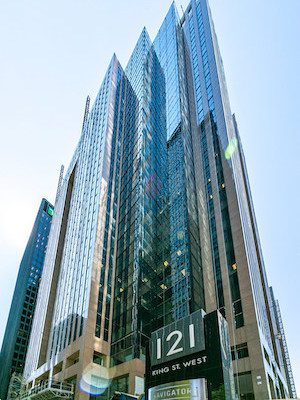
Crestpoint Acquires Downtown Toronto 121 King W. Office Tower
Crestpoint Real Estate Investments Ltd. says it has topped the $2-billion mark in acquisitions over the past 12 months with the announcement it has bought the 25-storey 121 King St. W. office tower in Toronto’s financial district.
Toronto-based Crestpoint says it made the investment in the property on behalf of its open-ended Crestpoint Core Plus Real Estate Strategy Fund and an unnamed institutional partner. Together, they acquired a 100 per cent interest in the property.
Financial details were not released.
121 King St. W. is a 540,000-square-foot, class-A building located a block from the Bay Street intersection. Recently renovated, the tower is LEED EB Gold, BOMA BEST Gold, Wired Score Platinum, Fitwel Viral Response and Rick Hansen certified.
“Over the past year, we have grown the portfolio significantly and added landmark, high-quality properties like 121 King Street and the Amazon distribution centre in Ottawa,” said Kevin Leon, president and CEO of Crestpoint, in the announcement Wednesday afternoon. “The ability to add a Toronto financial core building connected to the PATH system in such a strong location, with high-quality tenancies further elevates the profile of the Crestpoint Core Plus Real Estate Strategy portfolio.”
121 King offers great transit access
121 King St. W. provides direct access to Toronto’s underground PATH system and a variety of retail and entertainment amenities. It is also well served by transit, including direct access to the St. Andrew subway station, the King streetcar route and GO Train service from nearby Union Station.
Tenants include federal government agencies and the National Bank of Canada.
“With our active management approach, we look forward to creating a dynamic workplace for the tenants that call 121 King Street home and we are optimistic the long-term market for high-quality office buildings in downtown Toronto will flourish,” Leon said in the release.
“The Crestpoint Core Plus Real Estate Strategy continues to offer investors access to a well-diversified, high-quality portfolio which continues to perform extremely well.”
Colliers assisted with due diligence and acted as an advisor to Crestpoint on the deal. Property management services will be provided by JLL.
The closing of the 121 King St. W. acquisition brings Crestpoint’s total assets under management to over $8 billion and 30 million square feet. It also caps off a very active 12 months for the firm, with that $2 billion of acquisitions involving assets in the office, industrial, retail and multiresidential sectors.
This includes several major properties.
The Amazon acquisition involved the country’s largest fulfillment centre, a multi-level, 2.8-million-square-foot building which was just completed in the Ottawa community of Barrhaven. Crestpoint paid $494 million for a 90.1 per cent share of the facility, with developer Broccolini retaining the other interest in the property.
Crestpoint and several partners also acquired the Place de Ville office complex in downtown Ottawa in late 2021 for $350 million. The property spans two city blocks not far from Parliament Hill. Crestpoint took a 50 per cent interest in the acquisition.
The acquisitions have added over 5.6 million square feet to its portfolio.
About Crestpoint
Crestpoint Real Estate Investments Ltd. is a commercial real estate investment manager offering a diversified portfolio of commercial real estate assets.
Crestpoint is part of the Connor, Clark & Lunn Financial Group, a multi-boutique asset management company that provides investment management products and services to institutional and high net-worth clients.
With offices across Canada and in Chicago, London, and Gurugram, India, Connor, Clark & Lunn Financial Group and its affiliates collectively manage approximately $104 billion in assets.
Source Real Estate News EXchange. Click here to read a full story

Toronto Data Centre Markets Grow, But Face Challenges
Data centres have become an increasingly important part of the Canadian commercial real estate market and the country’s economy, but the sector faces expansion challenges in the country’s largest markets.
Toronto and Montreal are Canada’s two largest data centre markets and Cushman & Wakefield recently published updates on the growth and the current environment in both cities.
“Our biggest challenge in both markets is finding available land sites,” Cushman & Wakefield Global Data Centre Advisory Group vice-chairman Randy Borron told RENX. “If you did a search for 20 acres in either market right now, you would find nothing available for sale.
“The ideal scenario for operators, builders and developers of data centres is to go into a market and find a site for an initial build with land for at least one, two or three more spaces of development going forward instead of buying extra land. They have it serviced, they have it zoned and it can be entitled very quickly so they can start building for their clients.
“But in the larger markets of North America, Europe and everywhere, the logistics industry has exploded and taken up a lot of that serviced land. It’s creating a lot of challenges for us and our industry.”
Toronto’s data centre market
Toronto has 228 megawatts of built data centre inventory and 44 megawatts in its development pipeline, making it the largest Canadian market by a significant margin. The city had 16 megawatts of absorption in the second half of 2021 and Q4 was the strongest since Q1 2020, tightening the overall vacancy rate to six per cent.
Toronto’s industrial vacancy rate is just 0.7 per cent and land prices are escalating sharply. When an available site comes to market, competition often forces successful bidders to close in 30 to 60 days with few or no conditions.
That doesn’t work well for data centre developers requiring at least 90 days to close. Entering the Toronto market, therefore, remains difficult.
“The good news is Equinix has capacity both downtown and in Brampton,” said Borron. “Digital Realty is expanding its Vaughan facility. STACK is completing its new four-megawatt, Phase 1 site just east of downtown and Phase 2 will be 48 megawatts.”
There have been several other recent moves that have impacted, or will impact, the Toronto data centre market.
– Google completed its new cloud region in Toronto last fall, listing clients including Deloitte and Accenture;
– Zayo launched its Shielded Internet Access product in Toronto, which will allow clients to bundle their Internet, security and direct access to the cloud. The fibre provider also announced another 140 kilometres of new routes coming to the Greater Toronto Area (GTA) by the end of this year;
– Hut 8 acquired the operations of the TeraGo data centre portfolio across Canada, with two locations in Toronto;
– Amazon Web Services (AWS) announced 32 new metro areas to receive Local Zones deployments through 2024, with Toronto among the sites. Local Zones are a type of infrastructure deployment that places AWS computer, storage, database and other select services closer to large population, industry and information technology centres where no AWS region exists;
– Compass Datacenters is building a 214,000-square-foot, 30-megawatt data centre in Etobicoke;
– And, Microsoft plans a 290,000-square-foot data centre and Cologix is planning a 50,000-square-foot, 10-megawatt centre.
Toronto’s absorption history
Borron said the majority of absorption over the past five years in Toronto has been pre-leasing of sites that are in the early stages of development or construction.
“We have been very successful over the last few years in acquiring large sites with 50-plus megawatts of power. The vast majority of this has been through the acquisition of off-market properties,” he explained. “We are seeing this in many other large global data centre markets.
“This is forcing data centre developers to plan much farther in advance for developments and also consider acquiring sites that may not be ready for development for years and have other buildings and tenants with mid- to long-term leases in place.”
Borron expects the data centre vacancy rate may increase in the short term due to new construction, but additional capacity will need to be added to the pipeline to prevent shortages if demand stays consistent.
The Ontario Global Adjustment Program allows operators to reduce kilowatt-hour costs through peak load shedding and enables data centres to reduce power costs for the year to the range of four cents per kilowatt-hour, according to Borron.
That’s similar to Montreal, which has leveraged low power costs as a major advantage in attracting data centres and other companies.
Montreal’s data centre market
Montreal has 126 megawatts of built data centre inventory and 51 megawatts in its development pipeline.
The city made continued progress in the second half of 2021, with eight megawatts of absorption to equal its first-half activity. Despite slower take-up than many larger markets, the total is the highest in several years and has tightened vacancy to a still relatively high 14 per cent.
“Some companies are reluctant to locate some or all of their data centre requirements to Montreal due to language, cultural or legal reasons,” said Borron.
“In addition, latency times to key Toronto trading engines, head offices, cloud onramps or clients and customers make Toronto more attractive despite higher energy costs.”
Montreal has less constricted land and industrial markets than Toronto, making it easier to enter, and its cheaper power from sustainable sources also makes it attractive.
Data centre operators in Quebec are largely sheltered from the recent increases in gas and oil prices due to the province’s large hydroelectric capacity.
Montreal’s cheap power conundrum
Increased interest in Montreal from hyperscale operators is expected, as many have carbon-neutral pledges to fulfill before 2030 and the local hydroelectric power assists in achieving that goal.
However, Quebec has seen significant demand from industries with large power requirements. This has resulted in power constraints or lengthy timelines in some areas for power to be delivered. New entrants to Quebec should be aware of this constraint and plan timelines accordingly.
“Montreal has done an excellent job getting the word out on their green, low-cost power,” said Borron, who pointed out this has caught the attention of crypto miners, battery plants, hydrogen cell producers and others.
“The demand outpaced what Hydro-Québec planned and they are now increasing investment in distribution and substations to meet the new demand levels. This unfortunately is creating a barrier to entry.”
There’s been some recent activity in the Montreal data centre market and more is expected.
Borron said Amazon is building a data centre on Montreal’s South Shore and Google owns a site which it will eventually develop.
Vantage is planning three sites totalling 580,000 square feet and 148 megawatts.
“Many sites have room for expansion and building of additional phases,” said Borron.
“Some providers have struggled to lease their space, which can be due to the location of the site relative to competition or even, in some cases, a provider refusing to do smaller deals and wanting to reserve space for a larger user.”
QScale has suggested a Montreal campus may be coming soon after an initial build in Quebec City, which is attracting interest partly due to available sites and power, natural cooling and inexpensive power costs.
“Montreal still has a strong pipeline for new data centre builds and expansion capacity, but the market continues to tighten,” said Borron.
“Demand for land and industrial buildings is consistently outpacing supply, which will likely make it more difficult and expensive for new entrants in the future.”
Investors seek data centre assets
BentallGreenOak closed on a 218,486-square-foot downtown office and data centre building for $74 million last August. Longtime owner IBM elected to stay on in a sale-leaseback scenario.
Financial institutions and telecom firms are most commonly involved in sale-leaseback transactions, according to Borron.
“Sale-leasebacks are common in the industry; however we have not seen a large number in the Canadian market. There is currently a significant amount of capital seeking out data centre assets to diversify or expand investment portfolios for either growth or diversification.
“The data centre asset class really distinguished itself as a stable and high-growth asset, particularly since the pandemic hit. It is expected that we will see additional sale-leasebacks come to market in 2022 and in the coming years.
“Enterprise companies who build data centres are looking to exit their data centres. Migration to the cloud has been disruptive in their ability to fully utilize these sites and future major refresh costs create challenges.
“We are working with several companies that are working on their exit strategies from these assets. They are looking to balance their declining utilization and get sale proceeds to fund other digital transformation initiatives.”
Source Real Estate News EXchange. Click here to read a full story

Dream Industrial Forms $1.5B Toronto, Golden Horseshoe JV
Dream Industrial Real Estate Investment Trust (DIR-UN-T) and Dream Unlimited Corp. (DRM-T) have formed a $1.5-billion develop-to-hold joint venture with a “leading global sovereign wealth fund” to buy development properties and build industrial facilities in the Greater Golden Horseshoe Area.
The strategy is to acquire $500 million worth of development sites and then build what the Dream partners call “high-quality, best-in-class industrial assets.” They will then continue to own the properties after stabilization.
Dream Industrial REIT will have a 25 per cent interest in the venture, with the wealth fund holding the other 75 per cent.
“We are excited to work with a reputed global partner in building best-in-class assets in one of the strongest industrial markets in the world,” said Alexander Sannikov, chief operating officer of Dream Industrial REIT, in the announcement.
“We are extremely bullish on the GTA industrial market due to the strong demographics and significant scarcity of buildable land.
“With older vintage well-located product trading at record high valuations, we will remain opportunistic in sourcing properties that are attractive against our target hurdles and screen well against economic rent and replacement cost.”
Brampton, Cambridge properties seed JV
A Dream Asset Management subsidiary will be the asset manager for the properties. The REIT is expected to provide property management and accounting, construction management and leasing services at market rates.
The REIT will also seed the venture with two development sites for $98 million:
– Brampton East Lands is a 30-acre parcel in Brampton, which can support a 550,000-square-foot-plus logistics facility with targeted completion date in 2025. Dream acquired the site in April 2021 and will contribute it for $70.5 million;
– Maple Grove Road is a 28-acre land parcel in Cambridge, which should support the development of approximately 420,000 square feet in the next 24 months. Dream acquired the property in December and it is being contributed for $27.5 million.
The joint venture will also acquire a 10-acre site immediately adjacent to the Brampton East Lands for $23 million.
Together with the existing 30-acre site, this land parcel can support a 300,000-square-foot building targeted for completion in 2025. It is expected to close in the coming weeks.
Following the vend-in and acquisition, Dream Industrial REIT expects to realize net proceeds of approximately $67 million. The closing of the initial vend-in to the joint venture is expected to occur later this month.
“We believe that developments are an attractive way to add brand-new product at attractive economics to the REIT,” Sannikov said in the release.
“We believe that this partnership will allow us to enhance our exposure to developments and allow us to improve the overall quality and value of the business quickly and safely.”
About Dream Industrial REIT and Dream
Dream Industrial REIT is an unincorporated, open-ended real estate investment trust. As of Dec. 31, the REIT owned, managed and operated a portfolio of 239 industrial assets (351 buildings) comprising approximately 43 million square feet of gross leasable area across Canada, Europe and the U.S.
The REIT’s objective is to continue to grow and upgrade the quality of its portfolio, which primarily consists of distribution and urban logistics properties.
Dream Unlimited Corp. is a developer of office and residential assets in Toronto, owns stabilized income generating assets in both Canada and the U.S., and has an established asset management business.
Its entities hold $15 billion of assets under management across three Toronto Stock Exchange-listed trusts, a private asset management business and numerous partnerships.
Dream also develops land and residential assets in Western Canada.
Source Real Estate News EXchange. Click here to read a full story

How Is The War In Ukraine Impacting Commercial Real Estate Investors?
The global commodity price surge that has followed Russia’s invasion of Ukraine is impacting Canada’s commercial real estate market – in both negative and positive ways, industry experts say.
Canada’s inflation has risen to 6.7 per cent, a 31-year high, according to Statistics Canada. To rein in runaway price growth, the Bank of Canada raised the interest rate in April by half a percentage point to 1 per cent – the largest single increase since 2000 – and stated more hikes are forthcoming.
In short, both building and borrowing cost more, so Canadian commercial real estate properties are more expensive than ever, according to CBRE.
Much of the inflated costs of construction, particularly those that use natural gas, will be passed on to tenants
“The overriding factor for commercial real estate right now is that we are looking at extremely strong job growth – a very large increase in the number of workers hired,” says Jean-François Perrault, senior vice-president and chief economist at Bank of Nova Scotia. “And, of course, you need to put those workers somewhere.
“We thought the commercial sector would do reasonably well coming out of the pandemic, and, to a large extent, that is still our view. Nothing is shaking us off that, even though, for instance, the cost of financing has increased.”
Investors are paying higher interest rates, Mr. Perrault explains, “but it’s occurring in a growth environment that’s the strongest expansion in about 20 years.”
“What happens in expansions is, real estate, in particular, does really well. So, the macro context in which people make investment decisions, including within the commercial real estate sector, is really quite favourable.”
“The economy is raring,” Mr. Stovell says. “Tenants are coming back. Very large U.S. tech company tenants and other business firms are forcefully coming back into the office market, taking a lot of space. [Many] of those companies grew tremendously during COVID.
“We have more than one million square feet of office space in the development pipeline, all going ahead as planned. So, I think the market is going to be strong.”
Still, Mr. Stovell is concerned about “radically out of control” costs of building supplies, “which have only worsened with Ukraine situation.”
For example, the price of steel, which has been rising for two years, just soared higher, he says.
Even though both Canada and Russia produce iron and steel, Russia exported almost $210-million worth of iron and steel to Canada during 2021 (out of $2-billion around the world), according to the United Nations Comtrade database on international trade. With that supply sanctioned, Mr. Stovell surmises the price has risen.
“It’s hard to know” whether the war is the direct cause of higher steel prices, Mr. Stovell admits, “because supply chains are multinational and very complicated. But it’s definitely all part of the overall uncertainty.”
Engineered white oak flooring and glass prices have also “increased dramatically,” he says.
The China-made flooring is manufactured from Russia-supplied oak, and while trade between those countries continues, the supply chain has been disrupted, he explains. The price of the popular light-hued flooring has quadrupled just since the war began.
“Our buildings use a lot of glass,” Mr. Stovell adds.
According to Statista, Russia is the second-largest silicon producer, after China. Sanctions have intensified a worldwide, years-long supply shortage, Mr. Stovell says.
In addition, it takes “a huge amount” of fuel to melt silicon into a liquid to make glass – another factor contributing to today’s exorbitant prices, he says.
Much of the inflated costs of construction, as well as the increased costs of operating buildings, particularly those that use natural gas, will be passed on to tenants, he says. Most commercial property rents have such increases built into leases.
Owners of multifamily apartment buildings can only increase rents based on the inflation rate. “Residential tenants are looking at a 5-per-cent rent increase or even higher,” Mr. Stovell says.
Some economists have relatively good news for tenants, however.
Benjamin Tal, deputy chief economist at CIBC World Markets, says inflation could be a short-term problem. “Sixty to 65 per cent of the inflation we are seeing now is COVID-related,” Mr. Benjamin said at the recent Vancouver Real Estate Forum.
“If you all agree with that assumption, that this is a transition year, [this inflation] should disappear over the next year.”
Still, Kevan Gorrie, CEO of Toronto-based Granite REIT, which owns 119 mostly industrial, warehouse and logistical properties in North America and Europe, warns that, unless Russian President Vladimir Putin is overthrown, Russian sanctions are expected to persist even after the war and, therefore, inflated commodity prices could continue.
In terms of inflation, “more on-shoring of production away from Russia and maybe even away from China to, say, Europe – from lower-cost jurisdictions to higher-cost jurisdictions – is certainly going to add fuel to the fire,” Mr. Gorrie says.
But, he says, economic growth will allow “rents to be able to outpace inflation for many years.” This makes commercial real estate “an attractive asset class for investors.”
Source The Globe And Mail. Click here to read a full story

CF, SHAPE Plan 3 Res Towers Up To 58 Storeys At Fairview Mall
Cadillac Fairview and its joint venture partner SHAPE have submitted a rezoning submission to construct a new master-planned community at the CF Fairview Mall in Toronto, which would kick off with three residential towers up to 58 storeys tall.
The partners say the first phase of the development plan for the property at Don Mills and Sheppard Avenue East would consist of one rental apartment tower and two condo towers. It would be located adjacent to the existing Don Mills subway station on the south side of the shopping centre property, fronting onto Sheppard Avenue East.
The shopping centre is also bordered by the junction of highways 404 and 401.
Tower R1 would reach 58 storeys and 648 feet in height; tower C1 would contain 48 storeys at 535 feet; and tower C2 would be 38 storeys, 436 feet.
“For more than 50 years, CF Fairview Mall has been a community hub in North York, serving the evolving retail, transit, entertainment and service needs of the local area residents and businesses,” said Wayne Barwise, executive vice-president, Development, Cadillac Fairview. “As our longest-operating shopping centre in the GTA, the master-plan redevelopment extends our long-term vision and supports an expanding demographic seeking convenient, high-quality, and accessible residency in a dynamic, transit-connected community.”
The Phase 1 towers would contain retail components and amenities. The plan also includes a pedestrian-oriented urban plaza to be known as Village Green.
CF Fairview Mall master plan
It will replace an existing surface parking area and driveways and a portion of a five-storey parking structure.
The larger plan calls for four phases of redevelopment around the existing CF Fairview Mall building. The proposal would create approximately 4,700 residential units, up to 431,000 square feet of additional non-residential uses, and three new public parks totalling 84,000 square feet.
“SHAPE could not be more excited to expand into the Toronto market alongside our valued partner, Cadillac Fairview,” said John Horton, president and CEO of SHAPE, in the announcement. “Following our incredible success with RC at CF Richmond Centre (in B.C.), we’re ready to raise the bar, engage the local community and set a new standard for urban living with the complete reimagination of CF Fairview Mall.”
CF Fairview Mall is undergoing the final phase of a previously announced $80-million renovation and revitalization of its 230,000 square feet of existing department store and other retail space, including a T&T Supermarket outlet. The work involves introducing new brands, restaurants and improving pedestrian access to the property and the nearby Don Mills subway station.
The mall renovation, which has been underway for about two years, is expected to be completed in late 2022.
About Cadillac Fairview and SHAPE
Cadillac Fairview (CF) is a global owner, operator, investor and developer of real estate across retail, office, residential, industrial and mixed-use asset classes.
Wholly owned by the Ontario Teachers’ Pension Plan, CF manages in excess of $35 billion of assets across the Americas and the United Kingdom, with further expansion planned into Europe and Asia.
Internationally, CF invests in communities with partners including Stanhope in the U.K., Lincoln Property Company in the U.S., and Multiplan in Brazil.
The company’s Canadian portfolio comprises 68 properties, including the Toronto-Dominion Centre, CF Toronto Eaton Centre, Tour Deloitte, CF Carrefour Laval, CF Chinook Centre and CF Pacific Centre.
SHAPE is a fully integrated Vancouver-based real estate investment, development and management company leading some of the largest master-planned projects in North America including The Amazing Brentwood and The City of Lougheed.
Through its operating platform, SHAPE specializes in complete, transit-oriented communities with shops, restaurants, public space, entertainment and residential homes in one cohesive place.
Source Real Estate News EXchange. Click here to read a full story

Amazon Plans 3 New Ontario Facilities, Opens Hamilton Centre
Amazon Canada has officially opened its latest advanced robotics fulfillment centre, an 885,000-square-foot facility near the Hamilton airport, and also confirmed the development of three additional centres across Ontario.
Amazon says the four facilities in its announcement Tuesday will combine to create over 4,500 operations jobs in 2022 and 2023. About 1,500 of those jobs will be at the Hamilton facility YHM1, which is located at Upper James Street and Dickenson Road West in Mount Hope.
The other facilities included in Tuesday’s announcement are in Ottawa, Whitby and Southwold, a community southwest of London.
“This new facility in Hamilton is the company’s most advanced facility in our network today and it’s the 1,500 employees that really make this place spectacular,” said Vibhore Arora, regional director, Canada customer fulfillment for Amazon Canada, in the announcement.
“Robotics technology helps extend the reach and capability of our team in a manner that makes tasks easier and more efficient, and make our fulfillment centres safer and more collaborative.”
Amazon’s four new Ontario facilities
The facility was developed by Panattoni‘s Canadian development arm on an 80-acre parcel of land in a district which is undergoing major industrial and warehousing growth. The Hamilton airport is one of the most important air freight hubs in the country and is located just outside the western edge of the Greater Toronto Area.
Amazon has said the distribution centre will be focused on packing and shipping large customer purchases such as sports equipment, patio furniture, fishing rods, pet food, kayaks, bicycles and other household goods.
The company also recently opened a 50,000-square-foot “delivery station” in nearby Stoney Creek. The smaller delivery stations operate as a last-mile stage in Amazon’s distribution networks.
Elsewhere, Amazon confirmed plans for three additional facilities, but did not release any details about the exact locations, sizes or construction timelines. They are:
– Ottawa: YOW3 – robotics sortable fulfillment centre;
– Southwold: YXU1 – fulfillment centre;
– Whitby: YHM6 – sorting centre.
The Southwold note in Tuesday’s release is the company’s first public acknowledgement that it is building a facility in that area, although published reports for months have speculated Amazon will be the occupant of a large distribution centre being built at the sprawling 620-acre site of a former Ford assembly plant.
Montreal-based developer Broccolini acquired the site in 2021 and began preparation work on the property last summer. Broccolini has acknowledged only that an e-commerce company is slated to occupy the property, but the firm has been one of Amazon’s builders of choice in Eastern Canada.
RENX has reached out for additional information about the three other Ontario Amazon facilities, but has yet to receive a reply.
Ottawa and Whitby
Amazon has two large existing fulfillment centres in Ottawa and a smaller 100,000-square-foot facility which is being prepared as a robotics distribution centre for the firm. It’s not immediately known if this announcement relates to that property or a new site.
Its footprint in the nation’s capital is about four million square feet, which has all been developed over the past three years.
Broccolini owns a tract of industrial land in the city’s rural south end on which it has applied to build a large distribution centre of up to 700,000 square feet and a height of 98.5 feet. The project was challenged by local residents, but the Ontario Land Tribunal recently ruled in Broccolini’s favour.
That height could accommodate a multi-level facility of the type Amazon has occupied elsewhere in Ottawa, as well as in Edmonton and Metro Vancouver.
The sorting centre near Conlin Road and Gerrard Road in Whitby would be Amazon’s second major facility in Durham Region, just east of Toronto. It opened a million-square-foot distribution centre in neighbouring Ajax last year and is building a network of smaller facilities and stations in the area.
The global e-commerce giant has been expanding its operations across Canada at a frenetic pace during the past couple of years.
In 2021 alone, it launched 15 new facilities in Ontario, including a fulfillment centre in the GTA town of Ajax, sorting centres in Bolton, Brampton and Scarborough (all within the GTA), and 11 delivery stations from Ottawa to London and Stoney Creek.
The firm also recently put its huge new 2.9-million-square-foot, multi-level Ottawa facility into operation earlier this year.
Since 2021, Amazon Canada says it has created more than 3,000 jobs in the province with the launch of 15 new facilities. Amazon says its Ontario expansion between 2021 and 2023 will represent 19 new facilities and 7,500 jobs when complete.
Source Real Estate News EXchange. Click here to read a full story
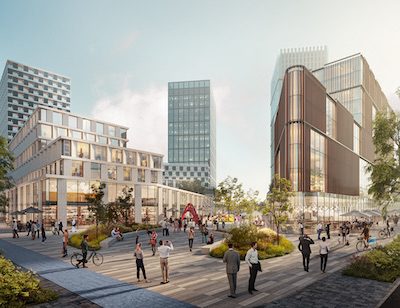
Brampton Boom: Development Spike Follows New Official Plan
With plans in place to intensify parts of the city, and large parcels of land available in its eastern and western reaches, the Toronto-area City of Brampton has become a hotbed for development.
That’s particularly true in the multiresidential sector, with the city showing increased openness for growth and attracting plenty of attention from builders.
Brampton 2040 Vision is a document created in 2018 to shape the future of the rapidly growing city of almost 700,000, located in the northwest portion of the Greater Toronto Area. It deals with the environment, jobs, urban centres, neighbourhoods, transportation, social matters, health, the arts and culture.
Neighbouring Mississauga, Peel Region’s other major city, has developed or is in the process of developing much of its available greenfield space. That’s not the case in Brampton.
“I look at Brampton as being what Mississauga was 20 years ago. The opportunity here now to provide intensification along major avenues and transit routes is great. Planning staff has come on side with that now. Previously there was more resistance,” National Homes president and managing partner Jason Pantalone, whose company has developed more than 2,000 acres and more than 1,000 homes in Brampton, told RENX.
He credited the current city council with a renewed focus on transit-oriented development.
“Now you can see, from the top down, there is a direction to promote smart development that has good planning behind it. We’re seeing that now, whereas five years ago it was a different municipality and different direction. It was very frustrating to get business done in that municipality.”
That has led to a series of major developments and redevelopments comprising millions of square feet of space and thousands of housing units, plus new commercial, retail, office and infrastructure.
Brampton’s vision and openness
SvN Architects + Planners and BDP Quadrangle are leading the planning, urban design and landscape elements of RioCan REIT’s Shoppers World redevelopment. Principal Shonda Wang is impressed by Brampton 2040 Vision and the way the city is looking toward its future growth.
“I’m encouraged that they’re trying to think boldly and be comprehensive with what their vision is,” Wang told RENX. “They’ve thought very much about all of the supportive infrastructure that’s required to support development. That includes transit.”
City of Brampton officials are also starting to work more closely with the development community, according to Wang.
“Brampton realizes that it’s important to think about public and community requirements, which are always critical, but also what the market requirements are. When you’re able to bring market, technical and community requirements together, that sets up the right conversations and processes for new developments to come online.”
These measures have opened up opportunities developers have been eager to take advantage of.
Shoppers World redevelopment
Shoppers World is comprised of a single-storey enclosed mall and stand-alone box stores encompassing approximately 690,000 square feet on a 53-acre site that will be redeveloped in phases over 20 years.
It could include four million square feet of sustainably focused, mixed-use density when all is said and done.
“The City of Brampton is very enthusiastic about us doing more with that site,” RioCan chief operating officer John Ballantyne told RENX. “Shoppers World is an older asset that’s still a viable part of the community. But, where we can add housing around it, we think that’s critical.”
The property could include up to 4,500 residential rental and condominium units and more than 800,000 square feet dedicated to commercial uses, including retail and office.
It will also include parks, open spaces and new walkable and bikeable streets to transform it from being a car-dominated environment with acres of surface parking. It could also incorporate a school and a community centre.
“Through the public realm and new streets and linear connections, that will create connections deeper into the site and each one of the mixed-use districts that will be introduced over time on the site,” said Wang.
“That mix of uses will include a retail high street that would have a high pedestrian focus and new small-scale retail and commercial opportunities alongside new opportunities for larger-format retail and commercial uses. Then there are a number of types of residential developments, including townhouses, mid-rise buildings and taller buildings.”
The site is bounded by Steeles Avenue West to the south, Main Street South to the east, Charolais Boulevard to the north and Kaneff Park to the west.
Transit hub at Shoppers World
Metrolinx’s 18-kilometre, 19-stop Hazel McCallion Line, a light rail transit (LRT) route that starts in Port Credit near Lake Ontario to the south, will go north along Hurontario Street to terminate at Shoppers World when it’s complete.
There are plans to incorporate an existing bus terminal and the future LRT stop to create a transit plaza surrounded by retail and commercial uses.
The redevelopment project received unanimous approval for rezoning and its master plan in November 2020. The planning and design process continues to move forward.
SvN is working with RioCan, lead architect BDP Quadrangle and a multi-disciplinary consulting team to realize site-plan approvals for Phase 1 on the southwestern corner of the site, which will have two residential towers with extensive landscaping. It won’t affect existing retail.
Additional site-plan approvals will be sought on a district-by-district basis as the project evolves.
RioCan also owns Trinity Common Brampton, Heart Lake Town Centre and other retail and commercial assets in Brampton.
“There are no short-term plans to intensify or redevelop them,” said Ballantyne. “However, they are part of our pipeline that we can reach into over the next 30 or 40 years and do exactly that. In the meantime, they’re wonderful assets and income-producing trophies for RioCan.”
Duo Condos

Duo Condos is a multi-phased development in Brampton, by National Homes and Brixen Developments. (Courtesy National Homes)
Duo Condos is a multi-phased residential community with commercial space at grade from partners National Homes and Brixen Developments at 245 Steeles Ave. W. A Sheridan College campus is to the west and the future LRT line will be to the east.
The first phase consists of 349 units, with the initial release of 300 condos selling out in just a week-and-a-half. The second release is coming this spring and a third release that will include penthouse and townhouse units will follow later.
The smallest units are around 425 square feet and they range up to close to 900 square feet. Prices started around $1,050 a square foot and are now averaging around $1,100 per square foot.
“Being able to offer homes starting in the $425,000 range up to $850,000 or $900,000 provides more affordable product that can’t be found anywhere in the GTA,” said Pantalone. “It was important for us, given the background and our history in Brampton, to be able to bring a product like that which can service the market and that we can be proud of.”
National Homes and Brixen closed on the site in May 2021 for an undisclosed price after conditionally acquiring it from Sundial Homes in October 2020.
Pantalone said land values and unit revenues have increased substantially since then, though he cautioned rising construction costs are impacting the overall feasibility of some projects.
Other Brampton residential developments
Several other high-rise and mid-rise multi-residential projects are at various stages of development in Brampton.
– i-Squared Developments’ Stella at Southside Condos is a sold-out 21-storey, 290-unit project near Steeles Avenue West and Hurontario Street scheduled for completion in 2023. The 40-storey, 450-unit Stella 2 is in pre-construction. Sales haven’t begun yet, but it’s anticipated it will be completed in 2027.
– Boardwalk REIT and Redwood Properties are developing 45 Railroad, a two-tower, 365-unit purpose-built rental apartment on the site of the former Dominion Skate Building at 45 Railroad St. in downtown Brampton. The first tower is slated for occupancy in September and the entire development should be stabilized in 2024.
– Inzola Group’s Symphony Condominiums is a sold-out 21-storey, 182-unit building at 145 Queen St. E. that’s nearing completion. Inzola previously completed the 27-storey, 230-unit Park Place Condominiums at 100 John St.
– The Daniels Corporation’s four-storey OMG 2 Condos, the second phase of the Olivia Marie Gardens master-planned community at Mississauga Road and Olivia Marie Road, is under construction and scheduled for completion next year.
– Daniels MPV is a master-planned condo and townhouse community located just east of Creditview Road on Bovaird Drive, adjacent to the Mount Pleasant GO Transit station. It’s a Daniels-Choice Properties development that’s now under construction.
– Solmar Development Corp.’s Bristol Place is a condo with two 48-storey towers and 1,148 units that’s in the pre-construction phase at 199 Main St. N. Sales are expected to start soon.
Source Real Estate News EXchange. Click here to read a full story







